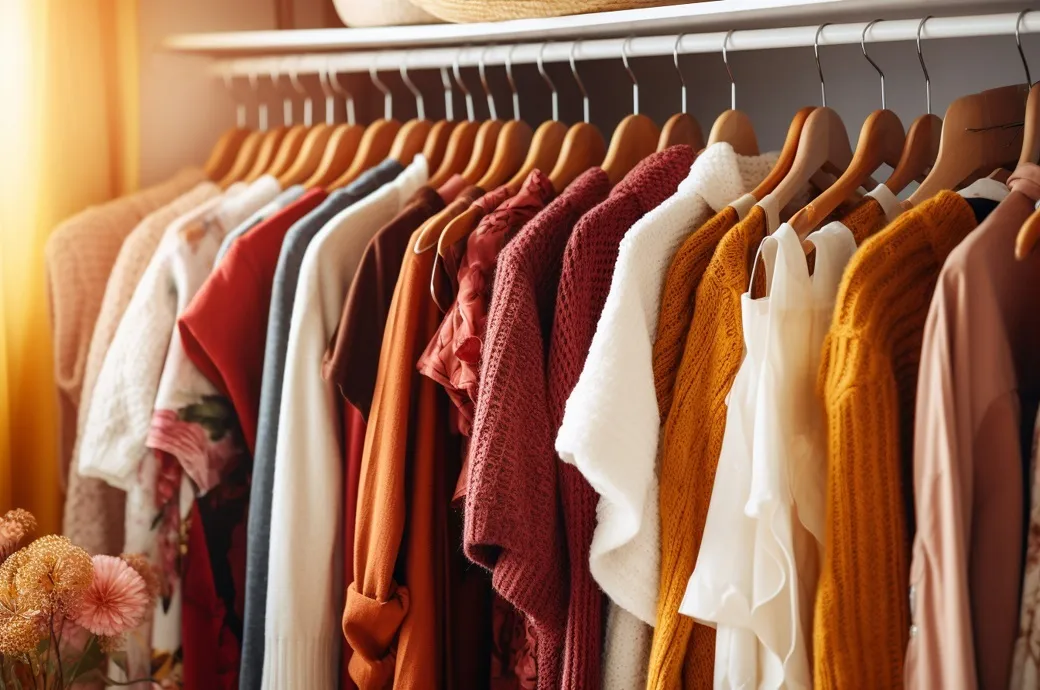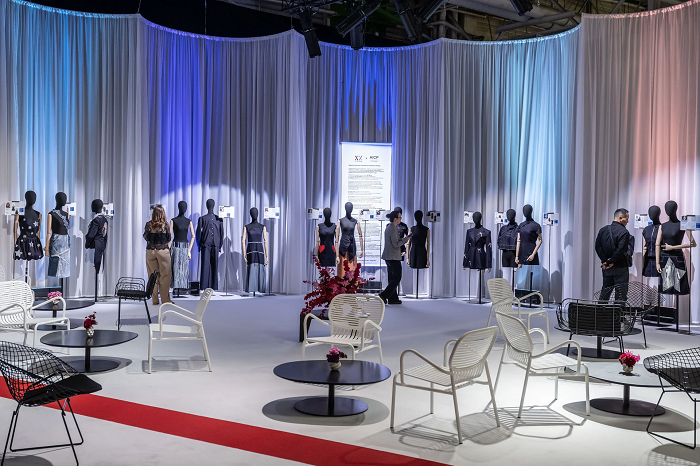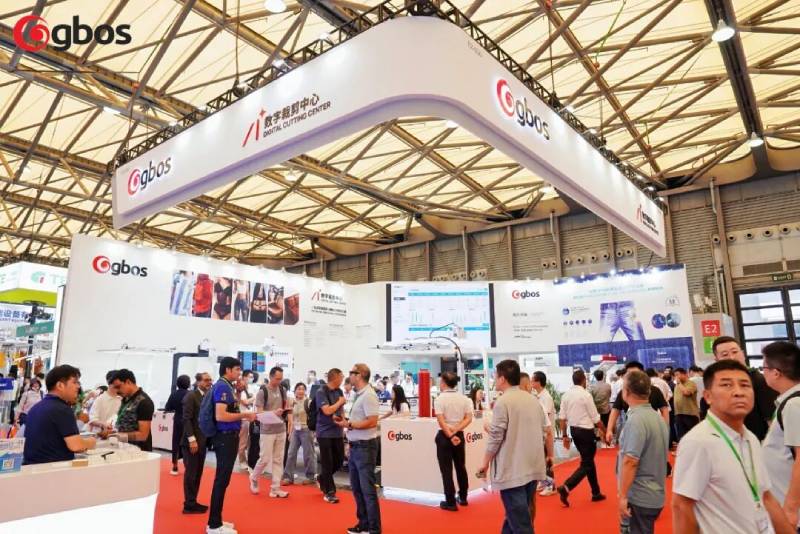FW
On August 1, 2025, the Government of India approved the establishment of seven PM Mega Integrated Textile Region and Apparel (PM MITRA) Parks across the country. The ambitious scheme will involve an investment of Rs 4,445 crore over the next seven years.
The government projects that the parks will attract a total investment of Rs 70,000 crore and generate nearly 2 million direct and indirect jobs. They will be located in the states like Tamil Nadu, Telangana, Gujarat, Karnatka, Madhya Pradesh, Uttar Pradesh and Maharashtra.
These parks are designed to create an integrated textile ecosystem, providing world-class infrastructure and logistics to support the entire value chain—from fiber to finished fashion.
In addition to the PM MITRA scheme, the government is also advancing other initiatives to strengthen the textile sector. These include the Samarth Scheme to prove job-oriented training across the textile value chain, the Rs 1,480 crore National Technical Textiles Mission to promote innovation and R&D in technical textiles.
The government is also offering financial assistance to Export Promotion Councils to help showcase Indian textiles at national and international trade fairs, strengthening the country's presence in the global market.
By integrating these initiatives, the government aims to boost textile exports, reinforce the ‘Make in India’ mission, and reduce the country's reliance on textile imports.
A Spanish company known for its sustainable denim finishing technologies, Jeanologia is launching a new initiative called ‘Denim Métiers.’ This project aims to bridge the gap between traditional denim workwear and the intricate artistry of haute couture.
For 30 years, Jeanologia has been a leader in transforming the denim industry by developing technologies that conserve water and eliminate harmful chemicals. The company's technology is used in 45 per cent of the world's denim production, but with ‘Denim Métiers,’ Jeanologia is shifting its focus from a workwear standard to a creative laboratory for fashion.
‘Denim Métiers’ redefines laser technology, which has typically been used for vintage and workwear effects, by applying it to create sophisticated, high-fashion looks. The company aims to move away from the traditional clichés of laser and show its true essence: a living, emotional tool with an artistic soul, says Carme Santacruz, Creative Director, Jeanologia.
The first collection, ‘Denim Métiers. Vol. 1. The Laser Atelier,’ showcases the dialogue between denim and couture. The pieces feature couture-inspired dresses in black and indigo denim with intricate, laser-carved floral patterns that mimic lace, revealing delicate layers of organza underneath; contemporary corsetry with effects that imitate wool and sun-faded gradients, achieved with unprecedented technical precision, and unique textures and transparencies created using complex digital files that transform the laser into a "needle of light."
This collection creates a new language for denim, blending its rugged, workwear roots with the refined techniques of haute couture.
Boosting India’s technical textile exports to the UK, the India-UK Comprehensive Economic Trade Agreement (CETA) will help increase them to $1 billion by 2030 from the current export value of $240 million.
CETA will grant India 100 per cent duty-free access for its exports, giving Indian manufacturers a crucial competitive edge over rivals like China. To help exporters capitalize on this opportunity, the Man-Made Textile Export Promotion Council (MATEXIL) will provide support and guidance.
This strategic partnership is expected to strengthen India’s position in the global technical textiles market and foster greater trade between the two nations.
The European textile industry is compelling European Union to accelerate free trade agreements (FTAs) with four key nations in the Association of Southeast Asian Nations (ASEAN). These new agreements are crucial for expanding market access, reducing tariffs, and boosting the sector's global competitiveness, say industry leaders.
The push for these FTAs is driven by the need to diversify sourcing and strengthen supply chains. They will help European companies reduce costs and build resilience against ongoing global disruptions.
However, the industry's call for these new trade deals comes with a clear condition: any agreement must align with the EU's sustainability goals. This is intended to ensure that new trade relationships do not create unfair competitive advantages for companies that fail to meet European environmental and labor standards.
Cambodia's manufacturing sector experienced significant expansion in H1, FY25, with 116 new garment factories opening during this six-months period, bringing the total number ogarment factories in the country to 1,682 from 1,566 at 2024-end. driven by strong growth in both garment and non-garment industries.
According to a report by the Ministry of Labor and Vocational Training, this factory expansion coincided with a robust increase in exports. The General Department of Customs and Excise reported, Cambodia's exports of garments, footwear, and travel products (GFT) rose by 22 per cent Y-o-Y to reach $7.38 billion in the H1, FY25.
Garment products were a major contributor to this growth, with exports totaling $5.28 billion, also a 22 per cent increase compared to the same period last year. Imports of raw materials for the garment sector mirrored this trend, reaching $3.49 billion, a 21.43 per cent Y-o-Y increase.
The apparel retail sector is facing significant challenges due to evolving tariff policies and shifting consumer preferences, forcing brands to adjust their strategies to stay competitive. According to a report by GlobalData, companies that can quickly adapt to trends and offer strong value are positioned to succeed, while those that can't may struggle.
GlobalData's analysis points to Adidas as a brand expected to gain market share, thanks to the continued success of its Originals line and performance footwear. The company recently reported a 2 per cent sales growth in the second quarter, demonstrating its strong position. In contrast, Nike is reportedly struggling due to a lack of innovation and the need to streamline its core product lines.
Other sportswear brands, New Balance and Skechers, are also expected to perform well. GlobalData credits their success to product versatility and a strategic focus on high-profile athlete partnerships. In particular, Skechers has been aggressively expanding into new categories like soccer and basketball while signing notable ambassadors, including Harry Kane and Julius Randle. The company also recently made headlines by agreeing to a $9.4 billion sale to 3G Capital.
Despite its continued growth, online fast-fashion giant Shein is seeing its rapid expansion slow down as it matures in the market. The brand's ability to offer low prices and quickly respond to trends still gives it an edge over competitors like H&M and Zara.
Steven Madden’s total revenues increased by 3.4 per cent Y-o-Y to $1.11 billion in H1, FY25 ending June 30, 2025. Despite a rise in gross profit to $452.3 million, the company's net income plummeted to just $2.5 million during the period. This could be attributed largely to a steep increase in operating expenses, which increased from $328.4 million to $441.1 million.
In Q2, FY25, the company's revenue increased by 6.8 per cent Y-o-Y to $559 million. However, its gross profit margin slightly declined to 40.4 per cent, while adjusted gross margin was 41.9 per cent. Operating expenses of the brand increased to 47.2 per cent of revenue, compared to 31.3 per cent a year ago.
This spike in expenses led to a reported operating loss of 7.2 per cent totaling $40.3 million, a sharp contrast to the operating income of $46.9 million reported in the same period last year. The company posted a net loss of $39.5 million during the quarter.
In Q2, revenue from the company’s wholesale business declined by 6.4 per cent Y-o-Y to $360.6 million. Excluding the newly acquired Kurt Geiger, wholesale revenue declined even further by 12.8 per cent. Revenues from the wholesale footwear and apparel business also declined by 7.1 per cent and 5.3 per cent, respectively.
In contrast, direct-to-consumer (DTC) revenue increased by 43.3 per cent to $195.5 million, primarily driven by the Kurt Geiger acquisition. Excluding this, DTC revenue decreased by 3 per cent across both brick-and-mortar and e-commerce channels.
By Q2-end, the company operated 392 retail stores and seven e-commerce websites, along with 130 international concessions. This includes 73 Kurt Geiger stores and two e-commerce sites. Edward Rosenfeld, Chairman and CEO, affirms, the quarter was challenging, largely due to new tariffs on imported goods into the United States. The company is acting with agility to mitigate near-term impacts while focusing on long-term growth, he notes.
The United States has confirmed it will terminate the De Minimis duty-free exemption for all imported goods, effective August 29, 2025. This means that shipments to the US valued under $800, regardless of their origin, will no longer be exempt from duties and customs processing fees. The policy change for goods manufactured in China was already implemented in April.
This change is expected to have a significant impact on international businesses and e-commerce, as it removes a key cost-saving measure for low-value shipments.
After August 29, packages valued under $800 will incur standard U.S. import duties, plus any additional ‘reciprocal tariff’ based on the country of manufacture. Carriers will also add their own customs clearance charges.
For a period of six months, companies have the option to use a temporary flat per-item tariff for postal shipments. The rate will vary from $80 to $200 depending on where the goods were manufactured.
After the six-month period, all shipments will be required to have a full customs declaration and pay the necessary duties, additional tariffs, and shipping fees.
Companies should be prepared to provide additional paperwork to US Customs and Border Protection to prove the origin of their goods.
These changes will require companies that ship to the US to adjust their pricing strategies and logistics to account for the new costs and compliance requirements.
Global apparel retailer Uniqlo is set to expand its footprint by opening of four new stores across Canada this fall. The expansion includes the brand’s first-ever store in Victoria, as well as new locations in Quebec City, Calgary, and Edmonton.
Since launching its first Canadian store in Toronto in 2016, Uniqlo has become known for its innovative LifeWear apparel. This line of clothing is designed to be simple, high-quality, and thoughtfully crafted for everyday needs, constantly evolving to meet modern lifestyles.
The new stores will carry Uniqlo’s full range of LifeWear for men, women, kids, and babies. They will also feature seasonal collaborations and the popular UT (Uniqlo T-shirt) graphic tee collection. Uniqlo’s business model seamlessly combines its in-store shopping experience with the convenience of its online store at uniqlo.com.
With the new additions, Uniqlo will grow its Canadian presence to 37 stores. Globally, the brand operates over 2,500 stores, all committed to its core values of simplicity, quality, and longevity.
In Q2, 2025, the index of orders for textile machinery, compiled by the Economics Department of ACIMIT, the Association of Italian Textile Machinery Manufacturers, declined by a meagre 1 per cent compared to the same period in 2024. In absolute terms, the index stood at 47.1 points (base year 2021=100).
This result was driven by an increase in order intake from the domestic market, which almost entirely offset the decline recorded in foreign markets.
Orders collected on the domestic market rose by 38 per cent compared to Q2, 2024, reaching an absolute value of 70.9 points.
In foreign markets, orders declined by 7 per cent compared to the same period of the previous year. The absolute value of the index stood at 43.8 points.
In Q2, FY25 the order backlog reached 3.9 months of guaranteed production (up from 3.6 months in the first quarter). It is also worth noting that, on average, companies in the sector used only 55 per cent of their production capacity in H1, FY25. Utilization is expected to reach 60 per cent in the H2, FY25.
Marco Salvadè, President, ACIMIT, quips, signals from the domestic market are encouraging, but concerns about the future remain. Demand in Italy is still weak. The increase recorded between April and June will need to be confirmed over the course of the year.”
A general climate of uncertainty persists on the foreign front due not only to US tariffs imposed on the EU, but also to the broader geopolitical situation, adds Salvade. Combined with a significant depreciation of the euro against the dollar, the 15 per cent duty may have varying negative impacts on the firm’s exports to the US, depending on the tariff rates applied to other countries supplying technology to US textile companies.
For now, the US remains a key market for the association’s manufacturers: it was the fourth largest in 2024, with a value of over €112 million, and it continued to grow in the first four months of 2025. Also concerning is the weak demand for textile machinery in the two most important markets, China and Turkey. Italian sales from January to April 2025 declined by 32 per cent in the Chinese market and by 47 per cent in the Turkish one.











